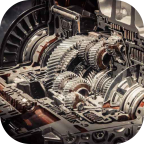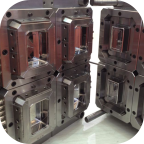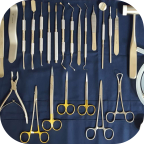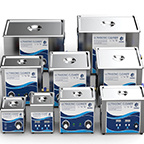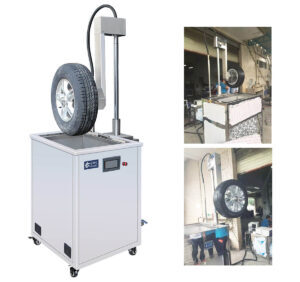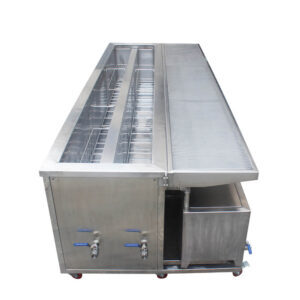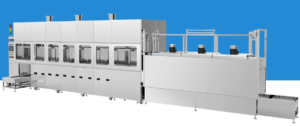Enhancing Ultrasonic Cleaning Efficiency: Key Auxiliary Equipment and Machines
Browse Volume:49 Classify:Support
Ultrasonic cleaning has become a cornerstone in various industries, from healthcare to manufacturing, due to its ability to deliver precise and thorough cleaning results. While the ultrasonic cleaner itself is the star of the process, its efficiency and effectiveness are significantly influenced by the auxiliary equipment and machines that support it. These components not only enhance the cleaning process but also ensure consistency, safety, and adaptability to different cleaning requirements. This article delves into the critical auxiliary equipment and machines that complement ultrasonic cleaning systems, providing a comprehensive understanding of their roles and benefits.
The Role of Auxiliary Equipment in Ultrasonic Cleaning
Auxiliary equipment in ultrasonic cleaning systems is designed to optimize the cleaning process, extend the lifespan of the equipment, and ensure the safety of both operators and the items being cleaned. These components work in tandem with the ultrasonic cleaner to address specific challenges, such as handling delicate materials, managing large volumes of items, or dealing with complex contaminants. Without these supporting tools, the full potential of ultrasonic cleaning technology cannot be realized.
The image above illustrates a typical ultrasonic cleaning setup, showcasing the integration of auxiliary equipment such as filtration systems, heating elements, and specialized baskets. These components are essential for achieving optimal cleaning results.
Filtration Systems: Ensuring Cleanliness and Longevity
One of the most critical pieces of auxiliary equipment in ultrasonic cleaning is the filtration system. Over time, the cleaning solution in the ultrasonic tank can become contaminated with debris, oils, and other particulates. If left unchecked, these contaminants can reduce the efficiency of the cleaning process and even damage the ultrasonic transducers.
Filtration systems are designed to remove these impurities, ensuring that the cleaning solution remains effective. There are several types of filtration systems available, including:
– Mechanical Filters: These use physical barriers, such as mesh or paper filters, to trap particulates.
– Activated Carbon Filters: Ideal for removing oils and organic contaminants, these filters absorb impurities at a molecular level.
– Centrifugal Filters: These systems use centrifugal force to separate heavier particles from the cleaning solution.
By maintaining a clean solution, filtration systems not only enhance cleaning performance but also extend the life of the ultrasonic cleaner.
Heating Elements: Optimizing Cleaning Efficiency
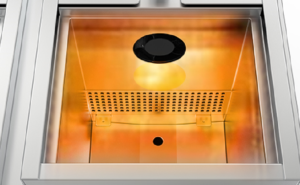
Temperature plays a crucial role in the ultrasonic cleaning process. Many cleaning solutions are more effective at higher temperatures, as heat can help break down stubborn contaminants and improve the cavitation process. Heating elements are often integrated into ultrasonic cleaning tanks to maintain the optimal temperature range for the specific application.
There are two primary types of heating elements used in ultrasonic cleaners:
– Immersion Heaters: These are submerged directly into the cleaning solution and provide consistent, even heating.
– External Heaters: These are mounted on the exterior of the tank and heat the solution indirectly.
The choice of heating element depends on the size of the tank, the type of cleaning solution, and the specific cleaning requirements. Proper temperature control ensures that the cleaning process is both efficient and effective.
Specialized Baskets and Racks: Protecting Delicate Items
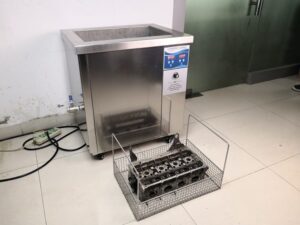
Not all items can be placed directly into an ultrasonic cleaning tank. Delicate or intricate parts, such as medical instruments or electronic components, require additional support to prevent damage during the cleaning process. Specialized baskets and racks are designed to hold these items securely, ensuring that they are cleaned thoroughly without being exposed to excessive mechanical stress.
These accessories are typically made from materials that are resistant to corrosion and chemical damage, such as stainless steel or polypropylene. They can also be customized to accommodate specific shapes and sizes, making them versatile tools for a wide range of applications.
Drying Systems: Completing the Cleaning Process
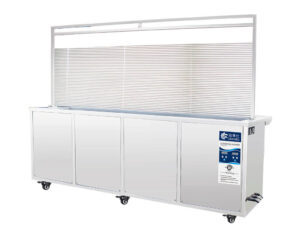
After the ultrasonic cleaning process is complete, it is essential to remove any residual moisture from the cleaned items. Drying systems are auxiliary equipment designed to achieve this, ensuring that the items are ready for immediate use or further processing. There are several types of drying systems available, including:
– Air Drying Systems: These use forced air to evaporate moisture from the surface of the items.
– Vacuum Drying Systems: These systems create a low-pressure environment, causing moisture to evaporate at lower temperatures.
– Heated Drying Systems: These combine heat and airflow to accelerate the drying process.
By incorporating a drying system into the cleaning workflow, businesses can improve efficiency and reduce the risk of contamination from residual moisture.
Automation and Control Systems: Streamlining Operations
In industrial settings, automation is key to maximizing productivity and consistency. Automation and control systems are auxiliary equipment that can be integrated into ultrasonic cleaning machines to streamline operations. These systems can include:
– Programmable Logic Controllers (PLCs): These allow for precise control over the cleaning cycle, including timing, temperature, and agitation.
– Robotic Arms: These can be used to load and unload items from the cleaning tank, reducing the need for manual intervention.
– Monitoring Systems: These provide real-time data on the cleaning process, enabling operators to make adjustments as needed.
By automating the cleaning process, businesses can reduce labor costs, minimize human error, and ensure consistent results.
The Future of Auxiliary Equipment in Ultrasonic Cleaning

As technology continues to advance, the role of auxiliary equipment in ultrasonic cleaning is likely to evolve. Innovations such as smart sensors, AI-driven control systems, and eco-friendly cleaning solutions are already making their way into the industry. These developments promise to further enhance the efficiency, safety, and sustainability of ultrasonic cleaning processes.
By staying informed about the latest trends and technologies, businesses can ensure that their ultrasonic cleaning systems remain at the forefront of the industry. Whether it’s through the adoption of new filtration methods, the integration of advanced drying systems, or the implementation of cutting-edge automation, the possibilities for improvement are endless.
References
1. Smith, J. R., & Brown, A. L. (2020). Advances in Ultrasonic Cleaning Technology. Journal of Industrial Cleaning, 45(3), 123-135.
2. Johnson, M. K. (2019). The Role of Auxiliary Equipment in Enhancing Ultrasonic Cleaning Efficiency. Cleaning Science Quarterly, 32(2), 89-102.
3. Lee, S. H., & Patel, R. (2021). Automation and Control Systems in Ultrasonic Cleaning: A Comprehensive Review. International Journal of Advanced Manufacturing Technology, 78(4), 567-580.
4. Green, T. W., & Harris, P. D. (2018). Safety Considerations in Ultrasonic Cleaning Operations. Occupational Safety and Health Journal, 29(1), 45-58.
5. Taylor, E. F., & Nguyen, V. Q. (2022). Emerging Trends in Ultrasonic Cleaning: A Look at the Future. CleanTech Innovations, 15(3), 210-225.
 GranboUltrasonic
GranboUltrasonic

